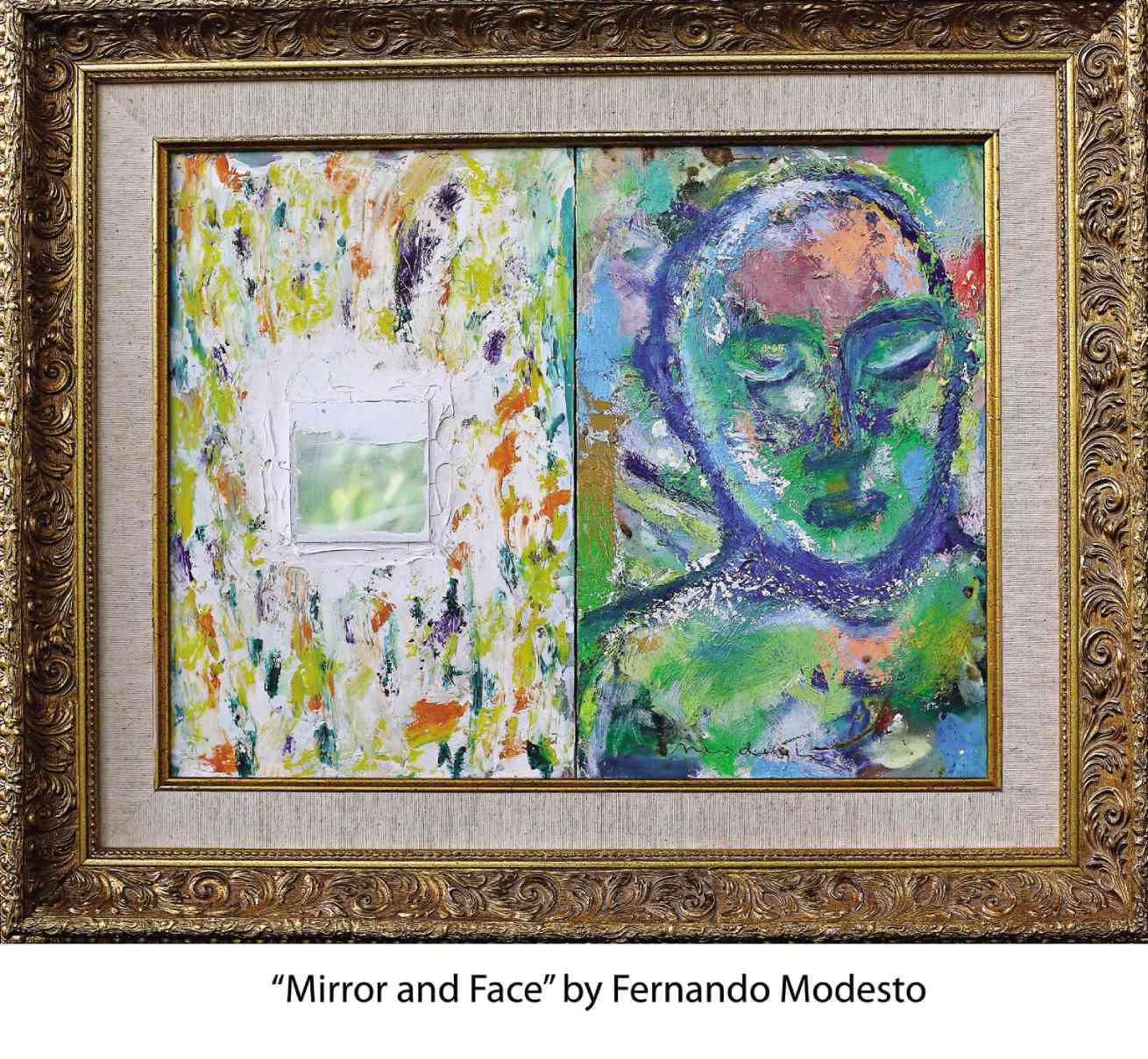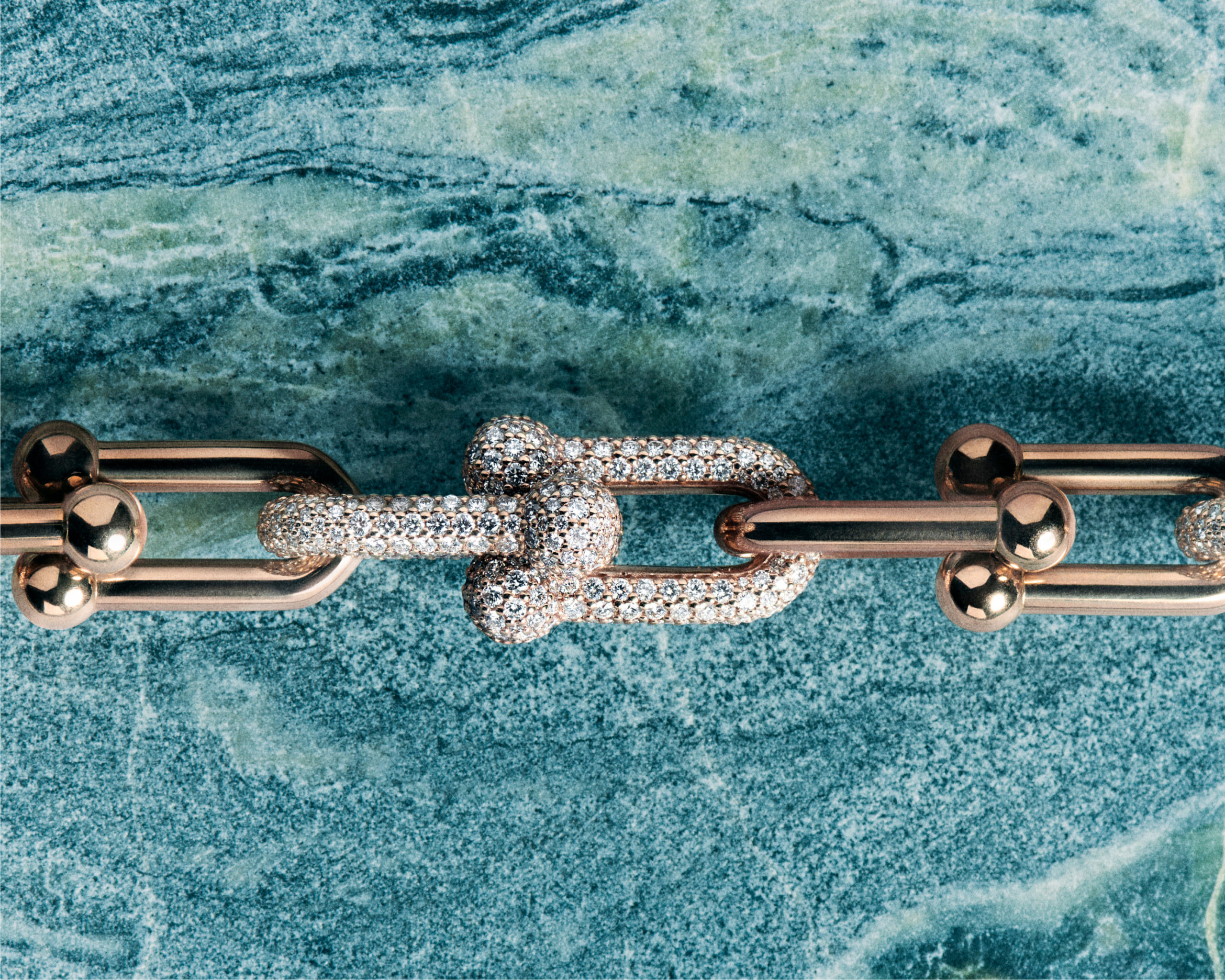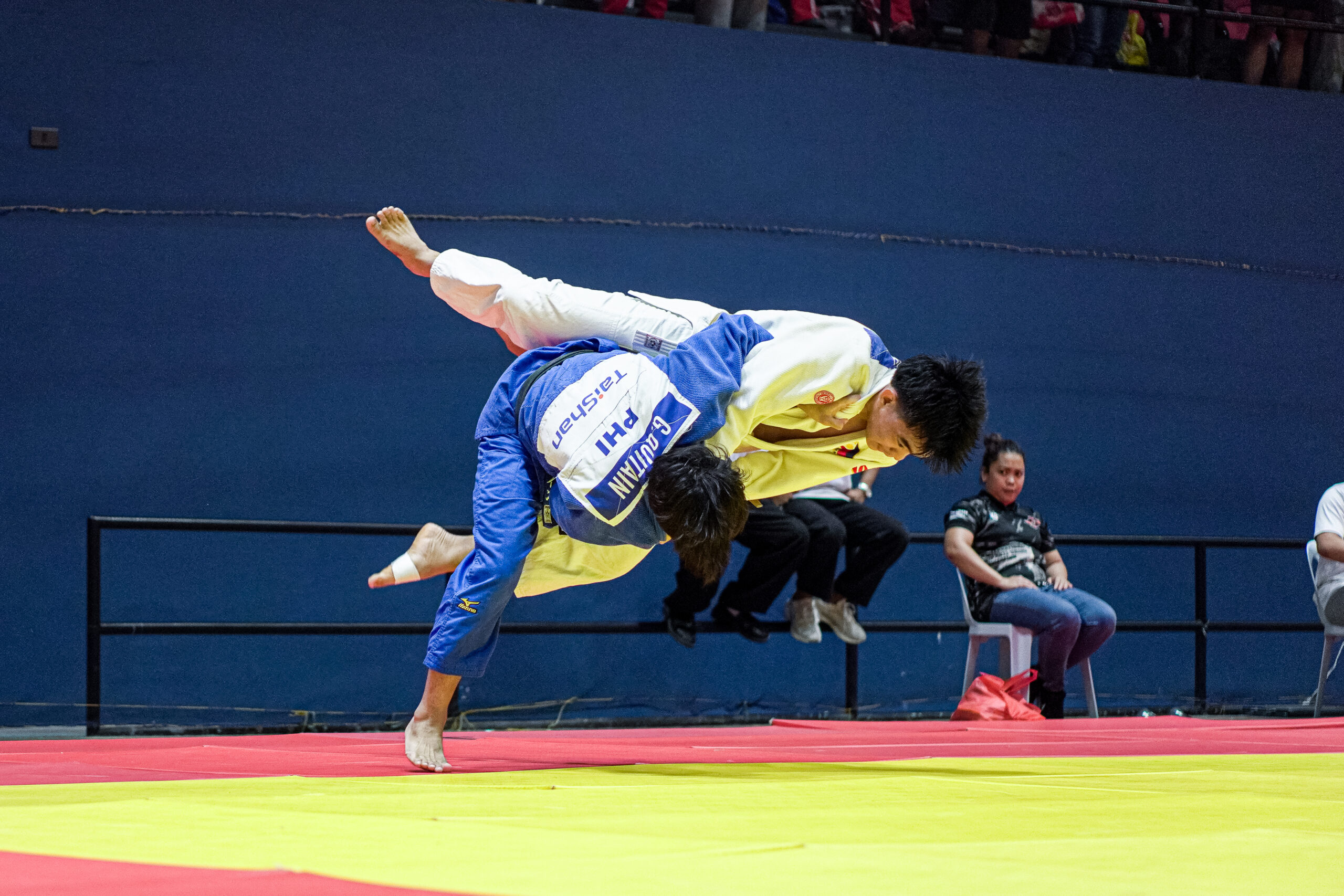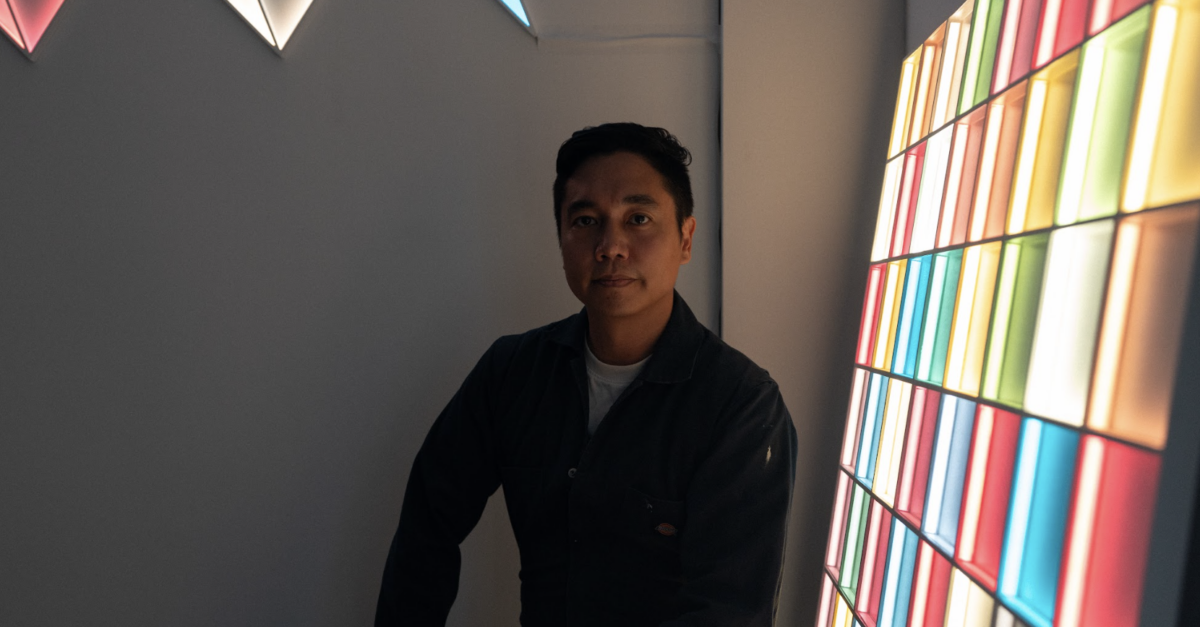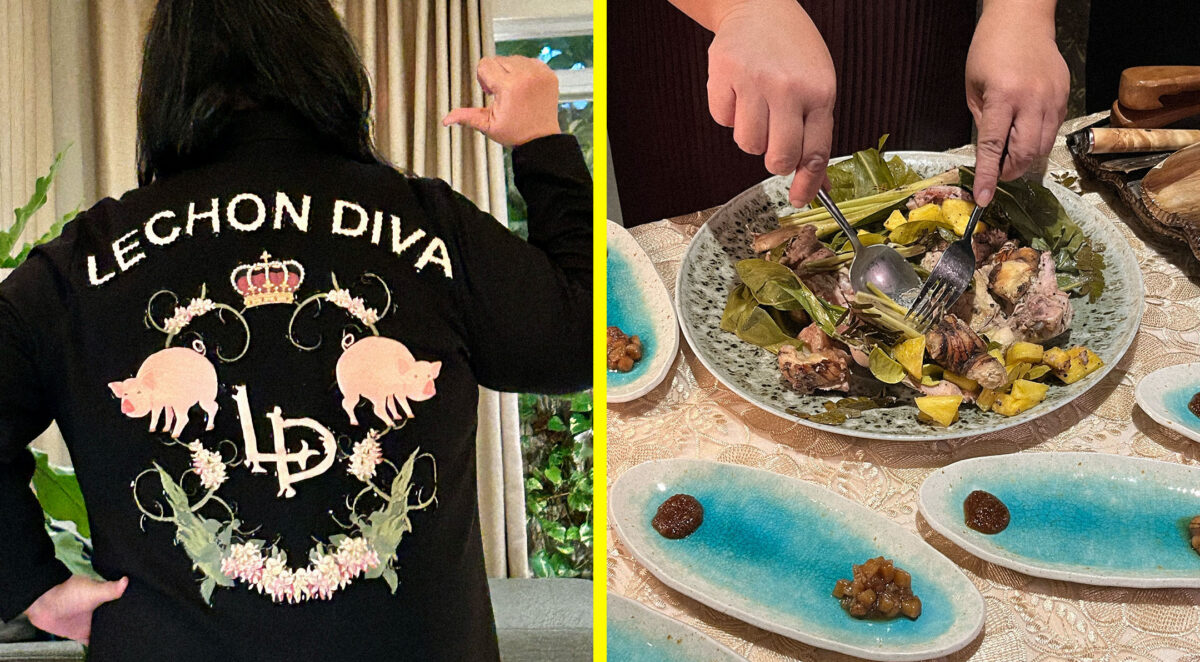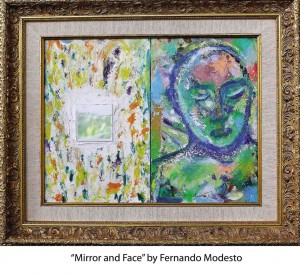
A classic test of a brand—whether a product, person or place—is its enduring imperviousness to change. Though the product or the person may have undergone its own organic changes, the interrogative inevitably arises: Is it perception or reality?
Since the start of his artistic career in the 1980s, Fernando Modesto—better known to friends by the first two syllables of his family name, accented on the last—has carved a reputation that is variously described as irreverent, lighthearted, playful and delightful, lusty and lustful, mirthful and comical. All of which may in varying degrees have captured the quality and tonality of his art—but then again, may have entirely missed the point: the essential darkness of his art, the sharp-edged irony and the sardonic ebullience of his images.
To this day, Modesto is still best remembered for his images of male and female genitalia, which engendered the label “pubism.” Their success were an unqualified success. But through the decades, the label has persisted, lamentably attaching itself to the public persona of Modesto, like a tenaciously clinging barnacle. Despite a variety of other themes introduced by Modesto in succeeding shows—such as the Angel and Falling Man, gallery-goers still ask—was it merely conditional reflex?—if the four-letter slang word images are still around.
But alas, time moves on inexorably, but those who still insist on regarding Modesto as a kind of Peter Pan, a punk artist—or, as a leading daily once called him, an oddball—must be rudely informed that the artist has grown up, emigrated and worked in Indonesia for close to two decades, and has, in recent years, come back for good. Despite some health setbacks, Modesto has been painting assiduously at the peak of his creativity.

In fact, the art of Fernando Modesto is ripe and ready for a more serious assessment. It will be a matter of time before a well-deserved retrospective would be in the works.
“Tounge-in-cheek”
Meantime, welcome news to Modesto’s admirers is his current solo show at the West Gallery. The title is typically tongue-in-cheek, “Anonymous,” in a kind of mock regard for the celebrity that has been so blatantly worshiped in contemporary art, where the artwork is instead relegated in the background of the artist’s obsessive limelight.
One may also consider the works as having been brought into existence regardless of who the artist is. The irony, of course, is that each of the piece in the show bears the personal imprint of Modesto: a stark, deadpan seriousness where the viewer is inveigled to decide whether the work is intentionally flippant—that Peter Pan act again?—or, do the artworks now challenge the viewer to deepen his perception, to look more closely at the real intent of the work.
Modesto was part of the inner circle of the late artist Roberto Chabet, whose works were all fertilized by conceptual ideas. Chabet himself has acknowledged this his allegiance/ influence/ parody/ inspiration (choose: in true Chabet-esque fashion) to the thinking process of Marcel Duchamp and Jasper Johns.
“Take an object Do something to it. Do something else to it.” That was a classic Jasper John’s dictum. Does that account for the framed objects of Modesto? To be sure, the act of choosing an object to “art-ify” is pure Duchamp; he of the urinal, bottle rack, shovel fame.
Fetishized object
An object can be fetishized through sustained appearances in various guises. Modesto found it in the painter’s palette, with its combined context of color-mixing plate, the physical painting surface and support, and a witty use of the palette’s hole as the symbol of the human visage, through which in playground style, a person can fit his head. It is precisely the non-aggressiveness of Modesto’s images that belies the serious theme underneath.

In “Angels Without Wings,” four palettes are lined together. Each is drenched in slathered pigments of reds, oranges, greens and blues. These three palettes have blank, empty faces (the palette’s hole), while the fourth, in angelic white, features a toothily grinning woman’s face. Would this not conjure the fall of the angelic order? Could not mankind aspire to the sanctity of being angels without wings? If we banish any deeper interpretation, have we not in fact stayed too long at the fair?
Like angels, flowers lift us out of the doldrum of our dreary lives. Modesto invites us to take time to smell the roses. Though his version of roses may look like the top-shot of freshly-laundered, rose-scented bath towels, they have the whirling whorls of petals in profusion. As with Warhol’s pop flowers which were his collector’s favorites, Modesto’s flowers are actually a reblooming from previous shows, lurking from a deep dark background.
And what a marvelous, serendipitous find in the marbles! In another of those Johnsian objects, invested with either neutral or emotive connotations, the marbles, of course, harken back to the days of childhood and the thrills of colors, the glinting of light, the glee of a child. Embedded on the surface, they become part of a landscape, ingratiating themselves on equally delighted viewer.
Like Warhol, whose disingenuous remark that there is nothing behind the surface of his works (indeed, when an entire publishing industry has been built around it), Fernando Modesto’s modest remark that there is nothing mysterious about his work must be taken with a grain of … Johnsian salt!

